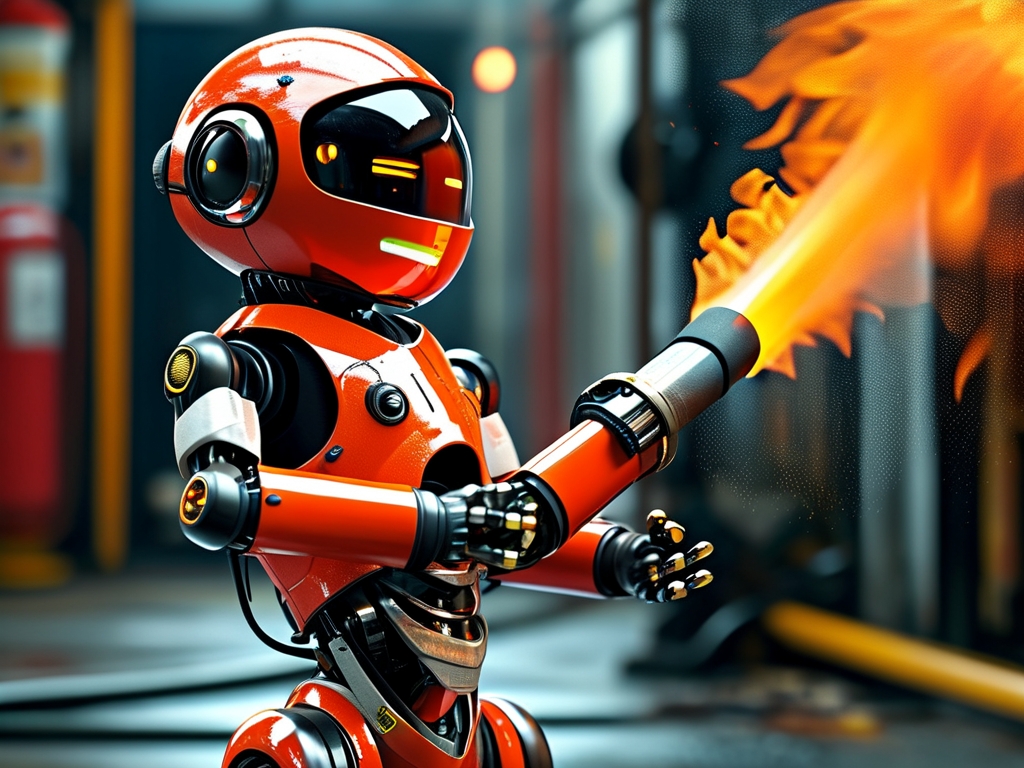Firefighting has long been a high-risk profession, requiring human responders to confront life-threatening situations. In recent years, advancements in robotics and artificial intelligence have paved the way for innovative solutions to mitigate these dangers. Robotic firefighting technology represents a transformative shift in emergency response, combining autonomous navigation, advanced sensors, and targeted suppression mechanisms. This article delves into the technical foundations, real-world applications, and future potential of robotic firefighting systems.

1. Core Components of Robotic Firefighting Systems
Modern firefighting robots rely on a synergy of hardware and software to operate effectively in hazardous environments. Key components include:
- Autonomous Navigation Systems: Equipped with LiDAR, GPS, and inertial measurement units (IMUs), these robots map their surroundings in real time. Algorithms like SLAM (Simultaneous Localization and Mapping) enable them to avoid obstacles and navigate through smoke-filled or structurally compromised buildings.
- Fire Detection and Suppression Mechanisms: Thermal imaging cameras and gas sensors identify fire sources, while suppression systems deploy water, foam, or chemical retardants. Some robots use targeted drones or robotic arms to access hard-to-reach areas.
- Communication Networks: Robots transmit data to human operators via secure wireless networks, enabling remote control and real-time decision-making.
2. How Robotic Firefighting Works
The operational workflow of a firefighting robot involves three stages:
- Situational Assessment: Upon arrival at a fire scene, the robot scans the environment using multispectral sensors. Machine learning algorithms analyze data to identify fire intensity, fuel sources, and potential hazards like gas leaks.
- Strategic Suppression: The robot selects the optimal suppression method based on fire type. For example, electrical fires may require carbon dioxide, while chemical fires demand foam-based solutions. Autonomous drones can create 3D heat maps to guide precision targeting.
- Post-Fire Analysis: After containment, robots collect forensic data to determine the fire’s origin and prevent future incidents.
3. Applications in High-Risk Scenarios
Robotic firefighting excels in environments too dangerous for humans:
- Industrial Disasters: In oil refineries or chemical plants, robots withstand extreme temperatures and toxic fumes. For instance, the Thermite RS3 robot, used in the U.S., can blast 2,500 gallons of water per minute while operating in 1,200°F heat.
- Urban Search and Rescue (USAR): After earthquakes or explosions, robots navigate collapsed structures to locate survivors and extinguish secondary fires.
- Wildfire Management: Unmanned ground vehicles (UGVs) and drones create firebreaks and monitor hotspots in forests. Projects like the EU’s HAWKS initiative deploy autonomous systems to combat wildfires.
4. Technical Challenges and Limitations
Despite their potential, robotic firefighting systems face hurdles:
- Sensor Reliability: Dense smoke and heat distortion can impair sensor accuracy, leading to navigation errors.
- Energy Constraints: High-power suppression systems drain batteries quickly, limiting operational duration.
- Ethical and Regulatory Concerns: Questions arise about liability in case of malfunctions and the need for standardized safety protocols.
5. The Future of Robotic Firefighting
Emerging technologies promise to address current limitations:
- AI-Driven Predictive Analytics: Robots could predict fire spread patterns using historical data and weather conditions.
- Swarm Robotics: Coordinated fleets of robots might tackle large-scale fires collaboratively. Researchers at MIT are testing swarm algorithms for distributed firefighting.
- Advanced Materials: Fire-resistant nanomaterials and self-cooling systems could enhance robot durability.
6. Case Study: The Dubai Civil Defense Initiative
In 2022, Dubai deployed autonomous firefighting robots at its airports. These units, developed by the UK’s QinetiQ, use AI to differentiate between false alarms and actual threats. They reduced response times by 40% and minimized human exposure to runway fires.
Robotic firefighting technology is reshaping emergency response paradigms, offering precision, safety, and scalability. While challenges remain, ongoing advancements in AI, robotics, and materials science will likely unlock new capabilities. As these systems evolve, collaboration between engineers, policymakers, and firefighters will be critical to ensure their ethical and effective deployment. In the near future, robots may not replace human firefighters but will undoubtedly become indispensable partners in safeguarding lives and property.

